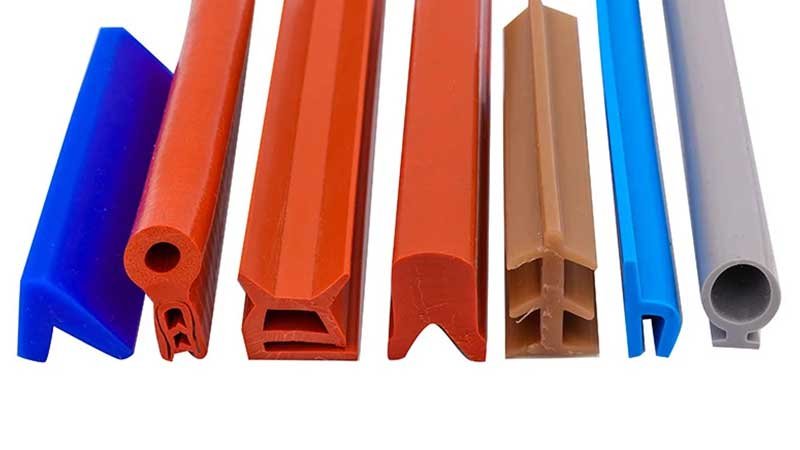Improper installation and poor maintenance of silicone rubber strips can lead to major problems. These strips are essential for sealing, insulation, and protection in various industries. However, many businesses encounter issues like premature wear, detachment, and ineffective sealing, which not only hamper performance but also result in additional costs and downtime. Fortunately, with the right approach, these problems can be easily avoided, ensuring long-lasting performance and reliability.
To ensure the longevity and effectiveness of silicone rubber strips, specific guidelines for installation and maintenance must be followed. Proper preparation, correct application techniques, and routine inspections are crucial for maximizing their durability and functionality. Neglecting these steps can lead to frequent replacements, operational inefficiencies, and higher costs over time.
Let’s explore how to properly install and maintain silicone rubber strips to avoid common pitfalls.
Best Practices for Installing Silicone Rubber Strips
Surface Preparation
Ensure the surface is clean, dry, and free from contaminants such as dust or grease before installing silicone rubber strips. Contaminants can prevent proper adhesion leading to detachment and leaks. Use appropriate cleaning agents to make sure the surface is spotless.
Measuring and Cutting
Accurate measurement and cutting are essential. Measure the area where the strip will be applied carefully to avoid wastage and ensure a perfect fit. Use sharp tools to cut the silicone strips evenly.
Adhesive Application
For adhesive-backed strips, peel off the protective layer carefully before applying it firmly to the surface for good contact. For non-adhesive strips, use a compatible adhesive or mechanical fastening methods.
Avoiding Stretching
Avoid stretching the silicone rubber strip during installation as it can cause shrinkage over time leading to gaps in sealing. Gently place the strip without applying unnecessary tension.
Sealing the Ends
Properly seal the ends of silicone strips by overlapping them slightly or using a compatible sealant to prevent water or air leaks.

How to Maintain Silicone Rubber Strips
Regular Inspections
Inspect silicone strips periodically for signs of wear or detachment so that timely repairs can be made before significant issues arise—more frequent inspections may be necessary in harsh environments.
Cleaning
While resistant to dirt and grime, regular cleaning with mild detergent and warm water helps maintain flexibility and appearance without degrading the material.
Lubrication
In applications involving moving parts in contact with silicon strips occasional lubrication reduces friction extending their life—use lubricants safe for silicon rubber.
Environmental Considerations
Understand environmental conditions where installed; though highly resistant prolonged exposure may still affect performance—consider protective coverings or more frequent replacements if exposed frequently harsh conditions
Replacement of Worn Strips
Even well-maintained silicone rubber eventually wears out; replace when showing deep cracks or loss elasticity continuing use risks failure costly repairs
Common Mistakes During Installation & Maintenance
Skipping Surface Preparation
Installing silicone strips on dirty or oily surfaces is a recipe for failure. Skipping this step can lead to poor adhesion and early detachment, rendering the seal ineffective.
Incorrect Adhesive Use
Not all adhesives are suitable for silicone rubber. Using the wrong type of adhesive can lead to weak bonds and potential detachment. Always use a silicone-compatible adhesive for the best results.
Overlooking Regular Inspections
Failing to inspect silicone strips regularly can result in undetected wear or damage. This can lead to unexpected failures, causing operational delays and additional costs.
Using Harsh Cleaning Agents
Harsh chemicals can degrade silicone rubber over time. Stick to mild detergents and avoid any cleaning products that contain solvents or abrasive materials.
Ignoring Environmental Factors
Environmental conditions play a significant role in the longevity of silicone rubber strips. Ignoring factors like temperature extremes or UV exposure can lead to premature aging of the strips.

Choosing Right Silicon Rubber Strip
Consider the Application
Different applications have different requirements. For instance, high-temperature environments may require heat-resistant silicone strips, while outdoor applications might need strips with enhanced UV resistance. Match the strip’s properties with the specific demands of your application.
Check the Hardness
Silicone rubber strips come in various hardness levels, typically measured in Shore A. Softer strips provide better flexibility and conformability, while harder strips offer more durability and wear resistance. Choose the hardness that best suits your application.
Evaluate Chemical Resistance
If the silicone strips will be exposed to chemicals, ensure they are resistant to the specific substances they will encounter. While silicone rubber generally has good chemical resistance, some harsh chemicals can still degrade it.
Consider the Size and Thickness
The size and thickness of the silicone strip should be appropriate for the application. Thicker strips may offer better sealing, but they might be less flexible. Conversely, thinner strips are more flexible but might not provide as robust a seal.
Look for Quality Certifications
When purchasing silicone rubber strips, look for products that come with quality certifications. These certifications ensure that the product meets industry standards for performance and safety.
Conclusion
Proper installation and maintenance of silicone rubber strips are essential for ensuring their durability and effectiveness. By following the guidelines outlined above—focusing on preparation, correct application, and routine care—you can avoid common issues like detachment, leaks, and premature wear. Moreover, by choosing the right type of silicone rubber strip for your specific application, you further enhance the reliability and lifespan of your seals.
Investing time in proper installation and maintenance not only extends the life of your silicone rubber strips but also contributes to smoother operations and cost savings in the long run.